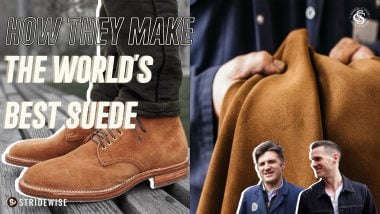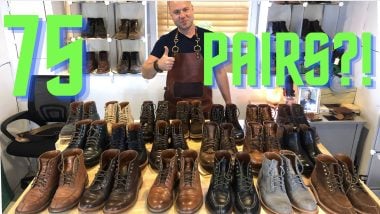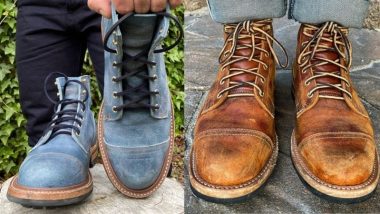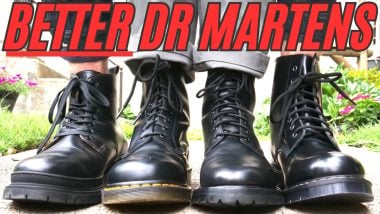Leather vs Suede vs Nubuck: Which Boots Should You Get?
Leather terms like full grain, suede, and nubuck are common when you start research high-quality boots. It’d be superficial to say one is “better” — for example, suede is usually more breathable than full grain, but full grain is usually more water resistant.
So we’re asking: what are the advantages and disadvantages of leather vs suede vs nubuck? There’s a lot to consider: durability, softness, dressiness, waterproofness, stain resistance, and upkeep requirements.
Luckily for you, we asked two leading experts: Michael Batson, owner of North Star Leather, and Andrew Bailey, the sales director of suede tannery Charles F. Stead, to get the truth.
Key Takeaways: Leather vs Suede vs Nubuck
Leather: Stands out from suede and nubuck by having a smooth surface: the outer layer of the skin is either intact (usually called “full grain”) or slightly smoothed, but you can see the skin.
Nubuck Leather: Full grain leather is abraded, or sanded down, to give it a slightly velvety feel. It’s basically “normal” leather with the skin layer sanded away.
Suede Leather: Full grain leather that’s been split down the middle, so it doesn’t have the outer layer of the skin: both sides of the product are fuzzy with fleshy fibers. It’s then usually sanded for a more uniform surface.
All vary in durability, quality, and thickness, but broadly speaking, suede and nubuck are more scratch resistant, leather is more water resistant..
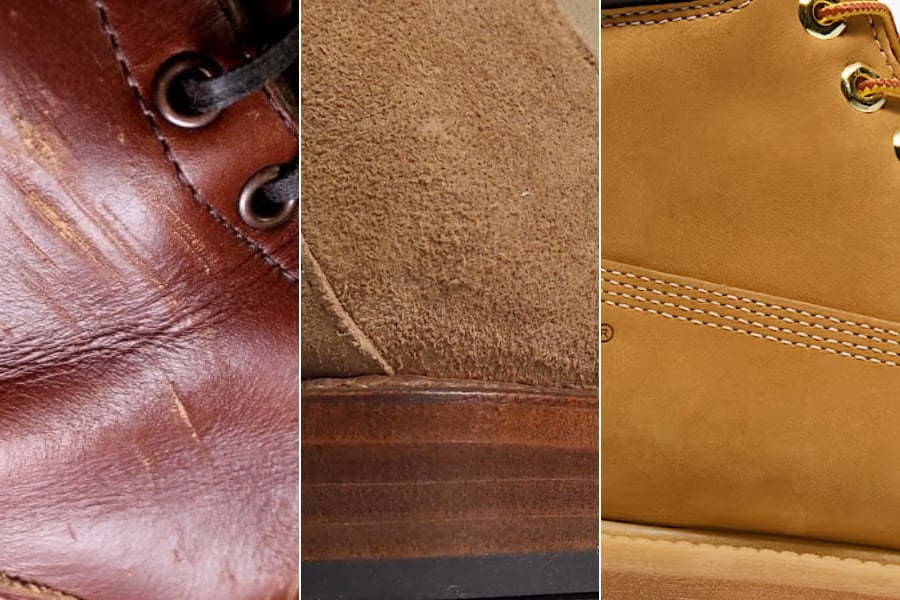
What Is Leather?
All three of these materials are usually considered kinds of “leather”, but in this article we’ll differentiate them as leather, suede, and nubuck.
Leather is an animal hide that’s been treated to produce a durable, versatile material. There are endless ways to turn skin into leather; I’ve heard the common denominator called “deputrefying.” Leather is made by turning skin into a material that won’t rot.
How bumpy, or “grainy” a leather is depends on if and how much it’s been “corrected,” or smoothed down.
“When we’re talking about the mechanical processes applied to leather, we’re really looking at two broad categories: top grain (smooth leather) and splits (which is suede),” explains Batson. “Top grain can be further divided into two types: full grain, which hasn’t been sanded or smoothed, and corrected grain, which has. Nubuck is a corrected grain leather.”

Look and Feel
Leather is pretty smooth but beyond that, it’s hard to generalize — countless people have spent entire careers inventing new processes. Do you want an article that’s rugged or dressy? Supple or stiff? Shiny or matte? Good for a jacket, a bag, a car seat, a dress shoe, a logging boot?
Full grain leather tends to be called the “best” leather because it means the outer layer of the animal’s skin is largely in tact. People think that means it’s the thickest or the toughest, though it’s not necessarily true — these qualities just tend to correlate with “full grain leather”.
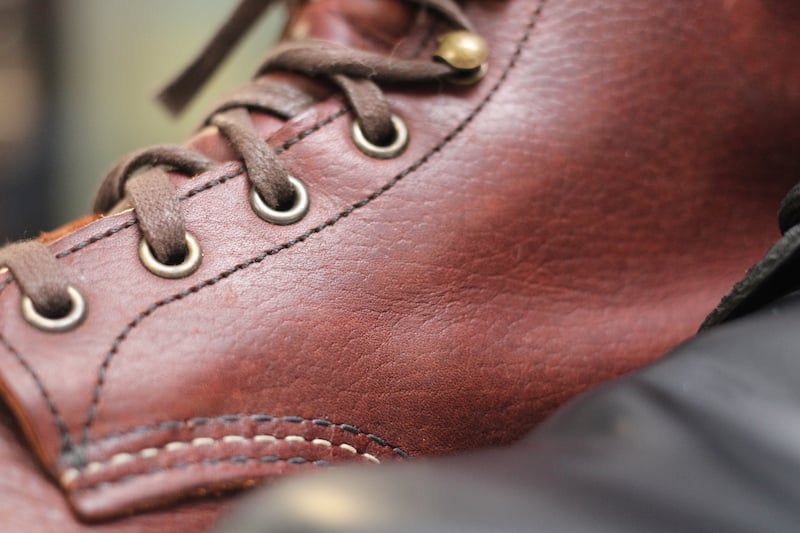
Even when a leather is marketed as “full grain,” if you can’t see the grainy pattern of the skin, it usually means that it’s been corrected a little. Contrary to popular belief, this doesn’t mean it’s bad leather — but sometimes, leather is significantly corrected to hide imperfections and save money.
Again, “corrected leather” often correlates with bad leather, but it’s not always the case. Horween Leather Company’s Chromexcel is the world’s most popular and respected casual boot leather, and it’s slightly corrected. (Yet usually marketed as “full grain.”)
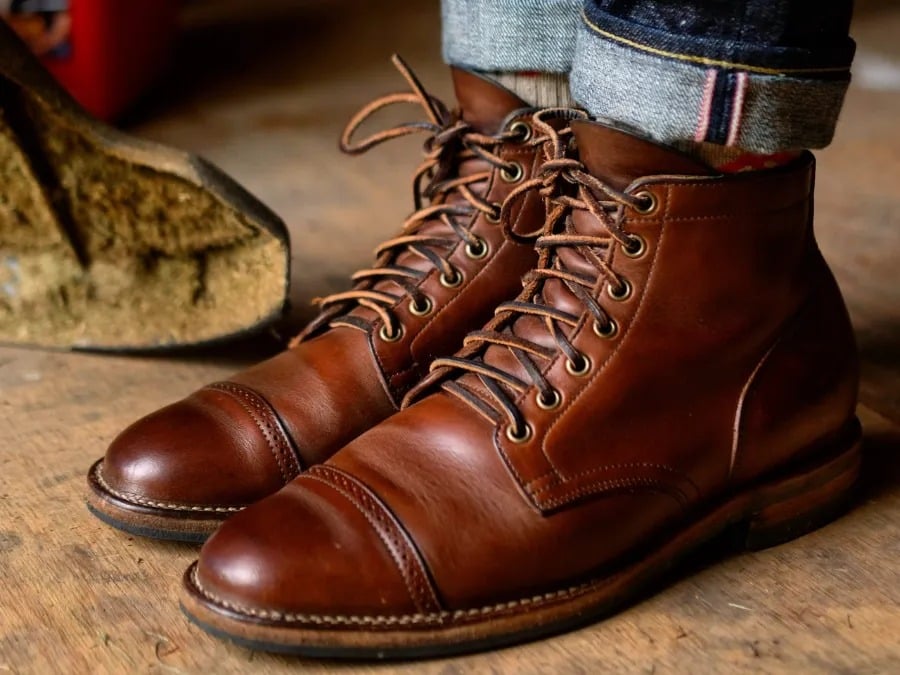
Chromexcel is an example of a leather that’s “hot stuffed,” meaning imbued with oils, waxes, and other moisturizers during production to increase the lustre, durability, and water resistance. This usually gives a leather some beautiful variation in color — but that also makes it look more casual, so there are plenty of high quality leathers that aren’t hot stuffed. They’re not worse, they just have different functions.
Leather is also tanned in different ways (typically “chrome tanning,” “vegetable tanning,” or a combination of both), within those processes there can be huge variation in the ingredients and chemistry, and there are plenty of other elements that affect a leather’s utility that occur outside of the tanning process, like the leather’s thickness and how it’s finished.
But for the purposes of this article: leather is smooth, not fuzzy. Unlike…
What is Suede?
Suede is leather that’s been split through the middle (think of a giant blade) so that it doesn’t have the outer layer of the skin (called the “grain” in leather speak). The fuzziness is flesh, and you get it on both sides of suede, while smooth leather has it on one side.
“Suede is effectively produced on the corium area of the skin beneath the outer grain,” says Andrew Bailey, the sales director of suede tannery Charles F. Stead. “It can be done by taking a hide, removing a thin grain layer, and then utilizing the rest of the hide.”
With no hard grainy barrier, suede is typically more porous than smooth leather: this means it’s more breathable and great for summer footwear, but it also means it absorbs water more easily, so it has a reputation for being more delicate.
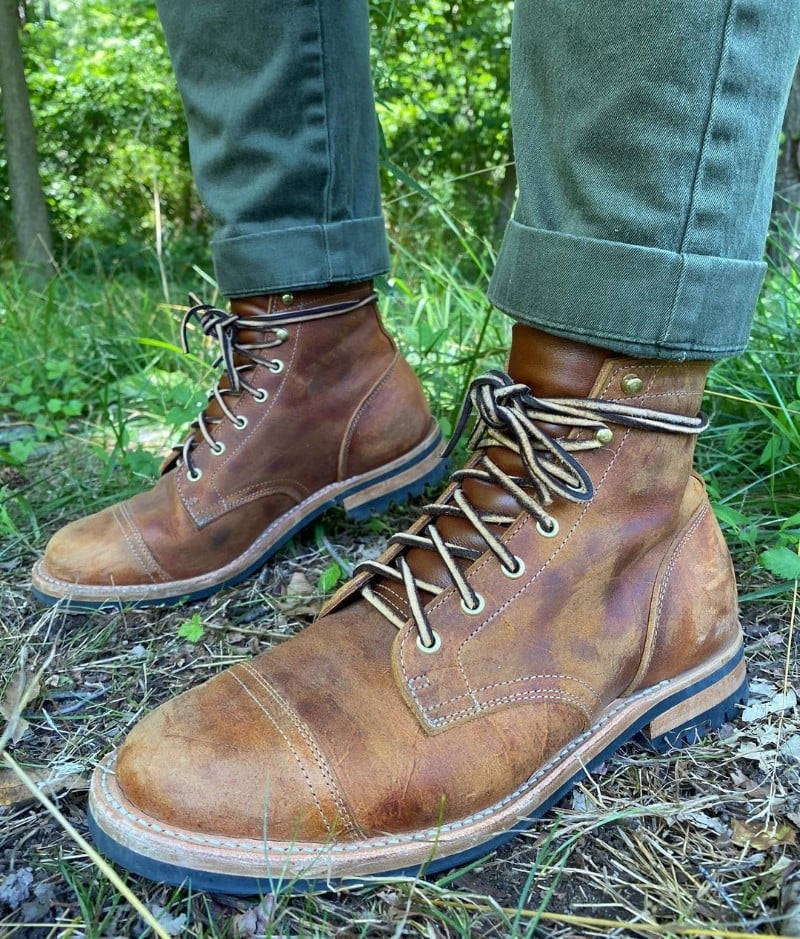
Here we’ll talk about correlation again: suede isn’t necessarily thin and delicate. But it tends to be, because thin suede makes the most of its breathability.
“A shoemaker is going to use leather anywhere from one to two millimeters thick — perhaps up to three for a heavy boot,” says Bailey. “But one can make a suede with that same thickness, just as one can make very thin full grain leathers.”
You have the option of buying thicker suedes for more outdoorsy wear, but it usually has a layer of wax over the top: this makes it very water resistant, though adding that barrier makes it less breathable and it flattens its attractive fuzz. You can’t have everything!
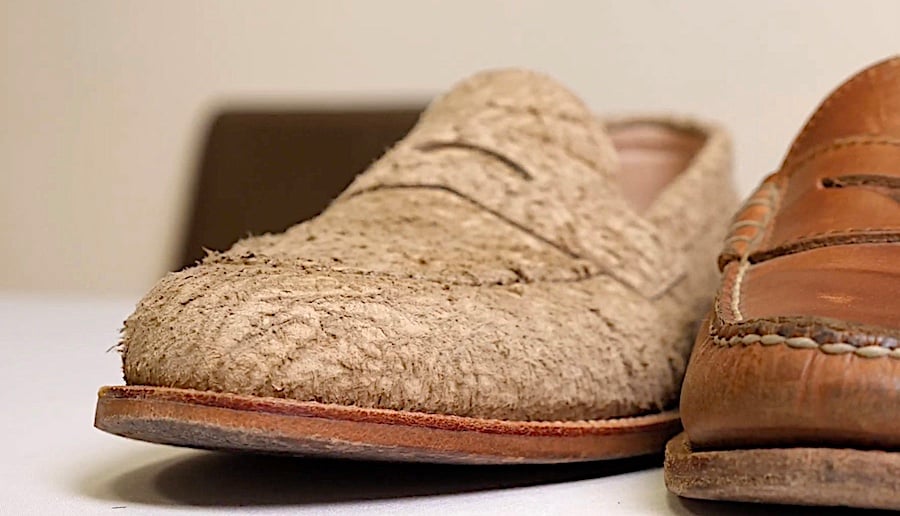
Look and Feel
While you can technically make thick and beefy suede, it’s almost guaranteed that any suede you encounter will be soft, flexible, thinner than smooth leather, and velvety or fuzzy to the touch.
It was originally used for articles that needed to be thin and pliable like gloves — the word comes from the French “gants de Suède,” which means “gloves from Sweden.”
These days, you’re likely to find it on shoes that are smart casual or business casual: it’s considered a little too soft for business professional wear, but a great way to look more put together than all-out casual.

It can also look great on a casual lace up boot, as you can see on this limited release of the Thursday Captain boot above. But suede is simply not often used on tougher boots because it’s a bit more work to get water out of it and because the public prefers it in the smart or business casual arena.
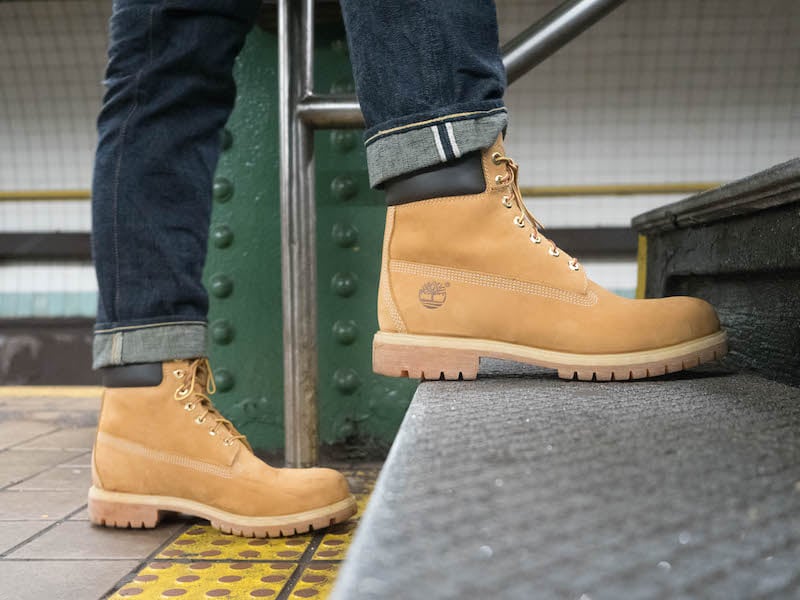
What is Nubuck?
Nubuck is what happens when smooth leather has the grain (skin) layer sanded away to reveal a nap of protein fibers. Usually this gives it a velvety feel, but there are some nubucks (like Red Wing’s Rough and Tough leathers) that are so lightly corrected they’re almost indistinguishable from smooth leathers.
You could maybe call nubuck a halfway point between smooth leather and suede: the outer layer of nubuck is closer to the hide’s grain than suede, and nubuck is generally considered tougher and more water resistant than suede.
“The sanding just takes the smoothest, tiny layer at the top off, giving nubuck that velvety feeling,” says Batson. “Honestly, nubuck is more similar to full grain leather with no finish on top than nubuck and suede. Full grain will just have more varied texture, while nubuck will be more uniform.”
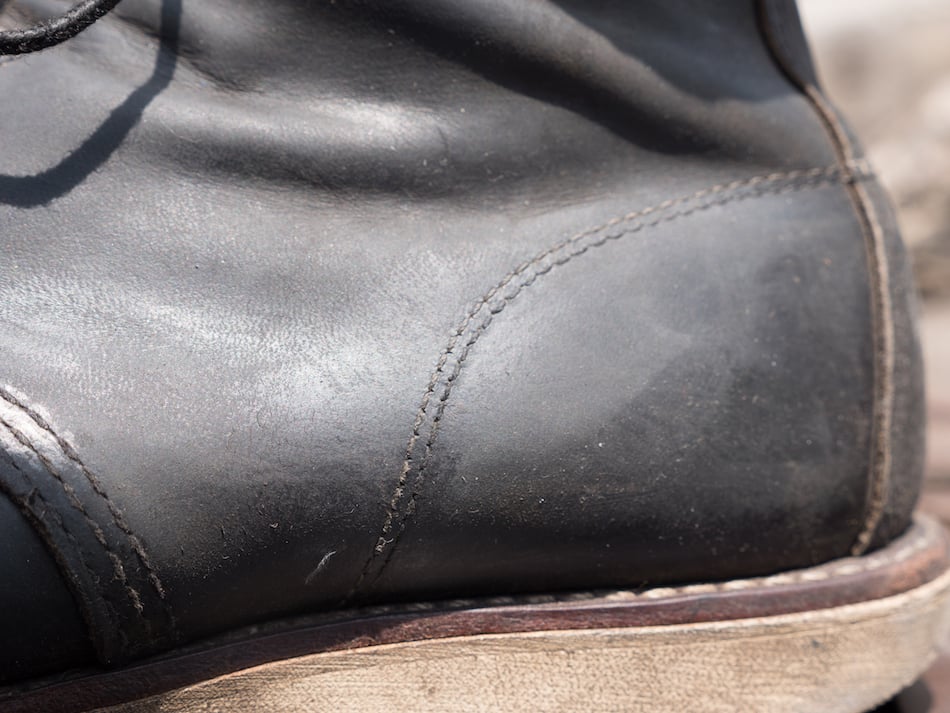
Nubuck is more scratch resistant than smooth leather and more water resistant than suede, so it’s common on work boots.
Another reason it’s common on work boots, and the main reason it’s not so popular, is that nubuck doesn’t patina the way smooth leathers and suede do. They get better looking with time, and nubuck doesn’t: it’s all function, so it doesn’t often wind up on higher end footwear.
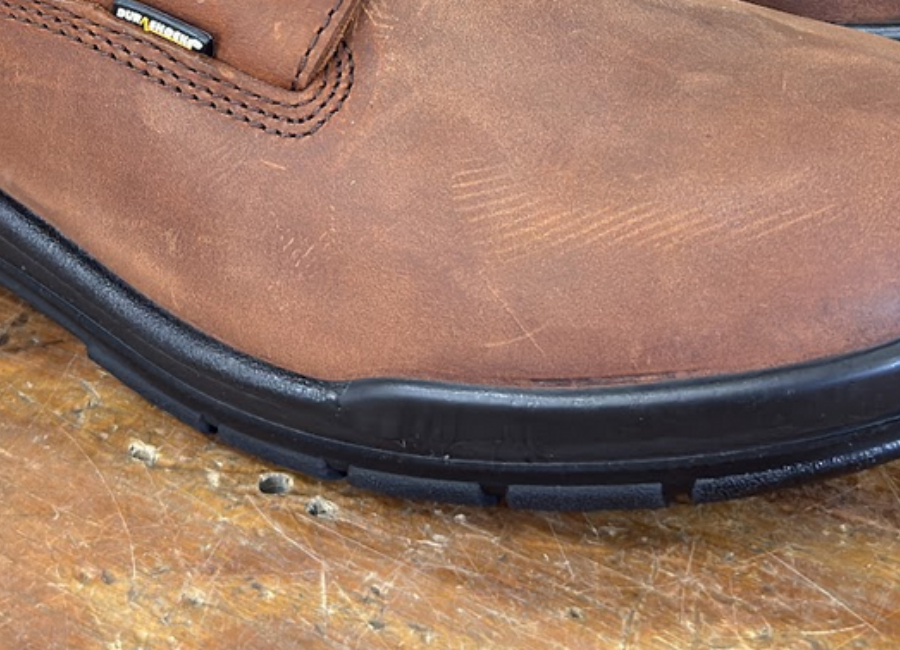
Look and Feel
Nubuck is leather without the outer layer of grain, so its surface is softer than full grain leather. The softness is why it’s often mistaken for suede, and it can be hard to tell the difference between some nubucks and some suedes.
But as a rule, the surface of nubuck is more velvety than suede, which tends to have longer protein fibers.
Possibly the most recognizable use of nubuck is in the iconic Timberland Premium Waterproof boot. But as mentioned, sometimes a leather is technically a nubuck and not described as such, like Red Wing’s Rough and Tough leathers.
Generally speaking, though, nubuck is good at handling scratches and water, but it doesn’t really improve with age — though aesthetics, of course, are subjective. You might prefer a boot whose appearance doesn’t change much with wear!
Cleaning
Cleaning keeps your boots looking their best, day-to-day. What does that look like for leather vs suede vs nubuck? Well, it depends quite a bit on which material you’re working with…
Cleaning Smooth Leather
One of the best things about leather is how easy it is to clean. Wipe off any heavy salt, mud, or grime with a damp cloth after wearing, and you’re well on your way.
The one thing you’ll want to invest in is a good horsehair brush. Periodic brushings will get rid of surface dirt and debris, smooth out minor scratches from regular wear, and revive the lustre of pull-up leathers by revitalizing the waxes and oils imbued in the hide during tanning.
If the brush isn’t cleaning them, use a gentle cleaner like Cobbler’s Choice Leather Cleaner.
Is they need a really deep clean, see our guide to using Saddle Soap.
Cleaning Suede
Suede stains easily, even from water, but it’s easier than you think to fix it: once it’s dry, a brass-bristle brush will get most stains out of the nap with ease. (A horsehair brush won’t do much to suede, and a brass bristle brush will probably damage smooth leather.)
Stains that resist brushing can be treated with an eraser block and a crepe brush like these. If they’re still dirty, get a suede shampoo like Saphir’s Omnidaim and watch (or read) our guide to cleaning suede.
Cleaning Nubuck
Like suede, nubuck will benefit from a quick brushing with a brass-bristle brush.
For existing stains, an eraser block (or just a regular pencil eraser, in a pinch) should do the job.
For extra dirty nubuck, you might want a nubuck shampoo. To be honest, a suede shampoo should do the trick, but Timberland made a dedicated nubuck cleaning kit that I used my guide to cleaning Timberlands, and it worked great.
Wrapping Up
There you have it: the ultimate guide to leather, suede, and nubuck. They’re all very durable, they all have their own advantages, and they can all vary so much in their quality, thickness, and production that it’s almost impossible to make blanket statements about any of them — but I’m pretty proud of how balanced this guide is. Which boots are you getting?

